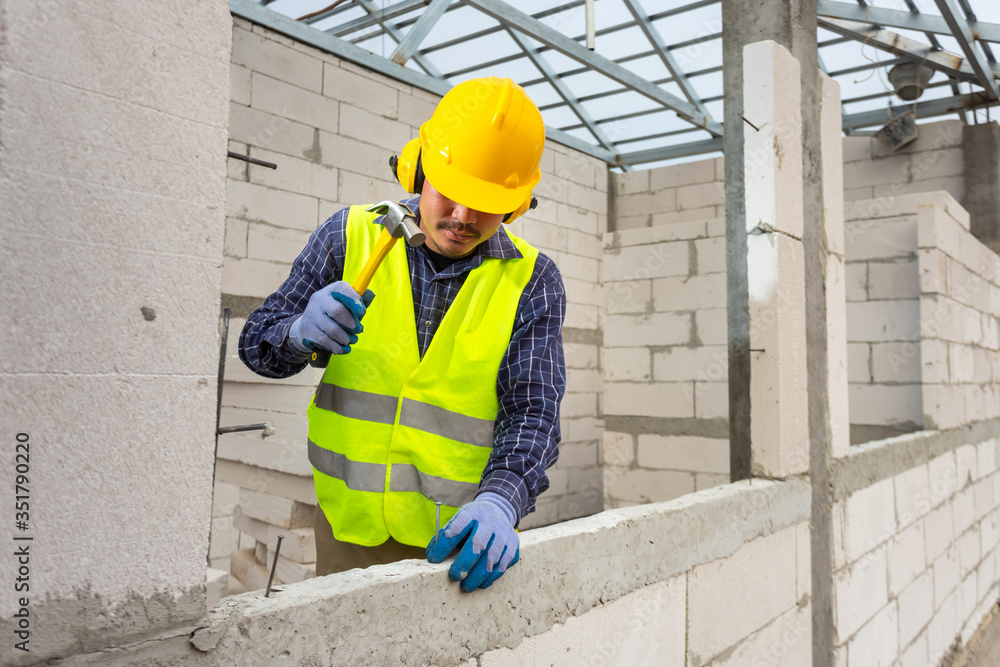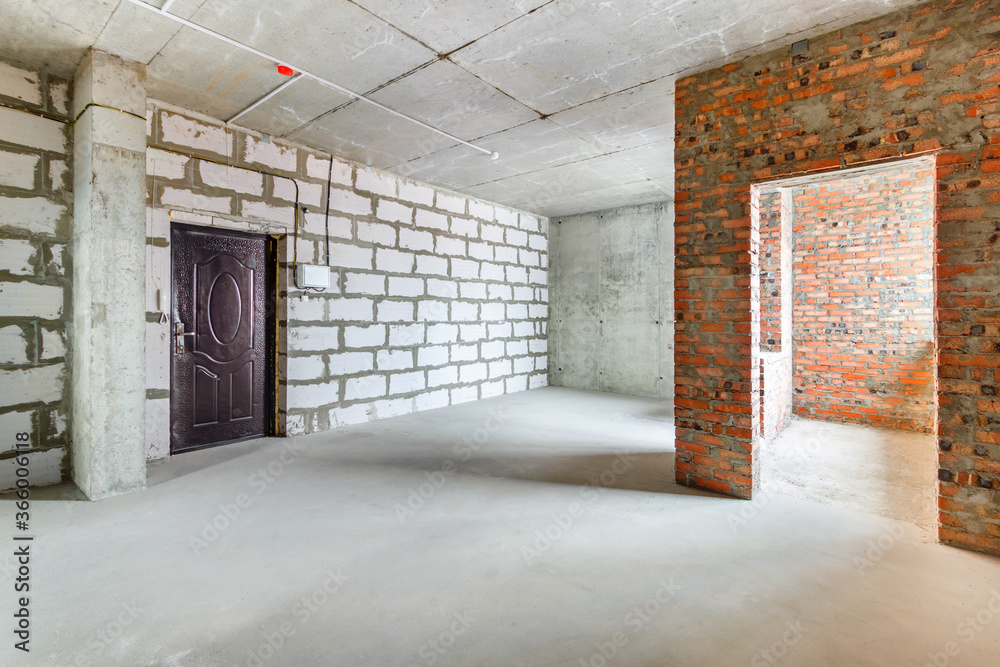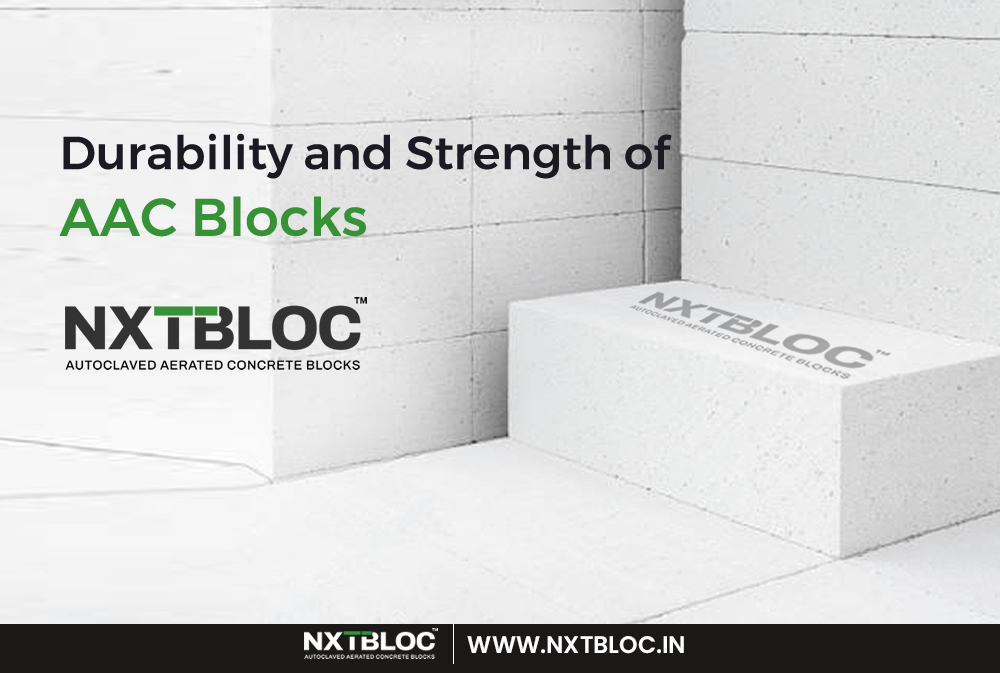Table of Contents
AAC blocks, also known as Autoclaved Aerated Concrete blocks, are innovative eco friendly building materials that have gained popularity in the construction industry. These blocks are lightweight, and versatile, and offer numerous advantages over traditional building materials.
In this article, we will explore the durability and strength of AAC blocks, understand the factors that contribute to their robustness and examine their applications in various construction projects.
Understanding the Strength of AAC Blocks
The strength of fly ash AAC blocks is influenced by several factors contributing to their structural integrity. Firstly, the quality of raw materials used in their production plays a vital role. These materials include cement, lime, sand, gypsum, and aluminium powder.
The precise combination and proportion of these materials contribute to the overall strength of AAC blocks. Additionally, the curing process and duration are critical factors that affect the strength development of AAC blocks. Proper curing ensures optimal hydration of the binding agents and results in enhanced strength.
To evaluate the strength of AAC blocks, various testing methods are employed. Compressive strength testing measures the ability of the blocks to withstand compression forces. This test involves applying a load to the blocks until they fail.
Flexural strength testing assesses the blocks’ resistance to bending and cracking. It determines their ability to withstand external loads without undergoing significant deformation.

Advantages of AAC Blocks in Terms of Strength
The eco friendly AAC blocks exhibit exceptional strength, which makes them a preferable choice for construction projects. In terms of compressive strength, AAC blocks outperform traditional clay bricks.
The compressive strength of fly ash AAC blocks typically ranges from 3 to 4 N/mm², whereas clay bricks have a lower compressive strength, usually around 2.5 N/mm². This higher compressive strength allows AAC blocks to be used in load-bearing structures, ensuring the structural integrity and safety of the building.
Furthermore, AAC blocks size demonstrate excellent flexural strength, making them highly resistant to cracking and bending. This characteristic is particularly beneficial in earthquake-prone areas where the ability to withstand lateral forces is crucial. The flexibility of AAC blocks reduces the risk of structural damage during seismic events, providing enhanced safety to the occupants.
The Durability of AAC Blocks
AAC blocks are renowned for their durability, which makes them a perfect material for a strong construction. Several factors contribute to the durability of AAC blocks.
Firstly, they exhibit remarkable moisture resistance. The inherent properties of AAC, such as low water absorption and the presence of air voids, prevent moisture penetration, thereby minimizing the risk of deterioration and damage caused by moisture-related issues such as mold or rot.
Moreover, AAC blocks possess excellent fire resistance properties. Due to the presence of non-combustible materials, they can withstand high temperatures and act as practical fire barriers. This characteristic enhances the overall fire safety of buildings constructed with AAC blocks.
AAC blocks are also highly resistant to pests, such as termites. The absence of organic materials in their composition makes them unappealing to pests, eliminating the risk of infestation and damage commonly associated with traditional building materials.
In terms of longevity, AAC blocks offer remarkable durability and require minimal maintenance. It can maintain its structural stability for a long time since it is resistant to weathering effects like frost and extremely high temperatures. This durability results in reduced repair and replacement costs, making fly ash AAC blocks a cost-effective choice for construction projects.
Applications of AAC Blocks

The durability and strength of AAC blocks make them suitable for various applications in both residential and commercial construction. In residential projects, AAC blocks are commonly used for exterior and interior walls. Their high compressive strength and durability ensure the stability and longevity of the building structure.
AAC blocks are also employed in partition walls and infill panels, providing efficient sound insulation and enhancing the overall energy efficiency of the building.
In commercial and industrial construction, fly ash AAC blocks find applications in the construction of high-rise buildings. Their lightweight nature simplifies the construction process and reduces the overall load on the building.
AAC blocks are also preferred for the construction of factory and warehouse structures, where their durability and resistance to moisture and fire are advantageous.
Comparing AAC Blocks with Other Building Materials
When comparing AAC blocks with traditional red bricks, concrete masonry, or clay bricks, The durability and strength of fly ash AAC blocks are superior. Their higher compressive strength ensures better load-bearing capacity and structural stability. Additionally, AAC blocks offer excellent energy efficiency and thermal insulation properties, surpassing those of clay bricks.
The presence of air voids within the blocks contributes to their thermal insulation capabilities, reducing energy consumption for temperature control.
Compared to concrete blocks, AAC blocks have the advantage of being lightweight. This quality makes handling and transport during construction simpler.
Furthermore, AAC blocks exhibit remarkable fire resistance and acoustic insulation properties, making them an excellent choice for buildings where fire safety and soundproofing are crucial considerations.
Conclusion
The durability and strength of AAC blocks are astounding, making them a valuable alternative to traditional concrete building materials. Their high compressive strength and flexural strength ensure structural stability and safety, particularly in load-bearing structures and earthquake-prone areas. AAC blocks offer excellent resistance to moisture, fire, and pests, contributing to their longevity and minimal maintenance requirements. With diverse applications in residential, commercial, and industrial construction, AAC blocks pave the way for sustainable and long-lasting buildings.
NXTBLOC is committed to catering to the construction industry’s needs by providing top-tier eco friendly Autoclaved Aerated Concrete (AAC) products. We take pride in being a trusted partner to our valued customers, offering remarkable customer service, technical expertise, and economically viable solutions. With our unwavering mission to propel sustainable construction and energy-efficient architecture, we stand firm in our pledge to be a global pioneer in the AAC industry. Contact us for all your construction-related inquiries.

Pl send details for approx
16000 sq ft wall,
For factory and warehouse project near Sampla
**
200 mm thickness
Height upto 4 MTR
**
Cost of materials with specifications,
And
Cost of labour with time bound completion of project
**
Jain GD
Construction consultants
9810 404 404
gdaastha @rediffmail.com